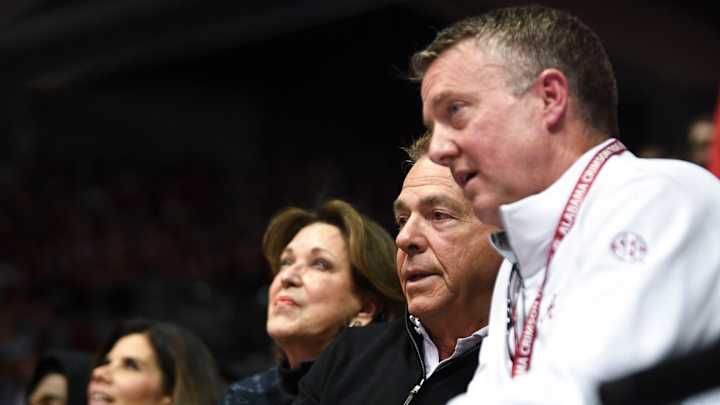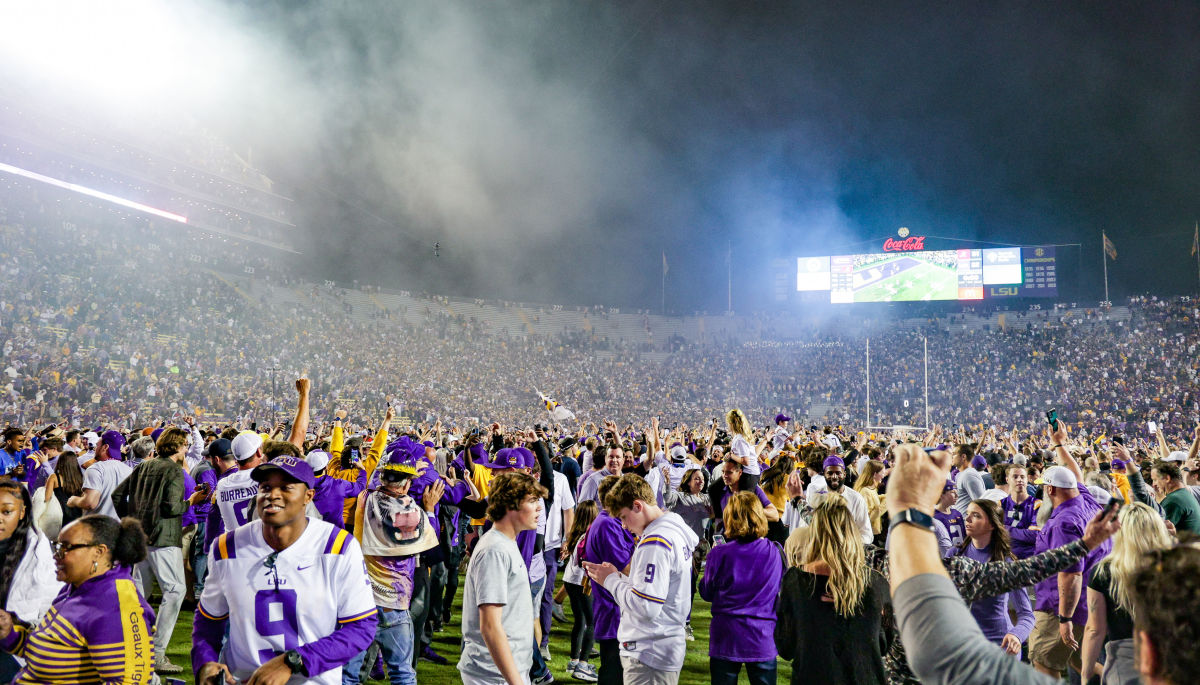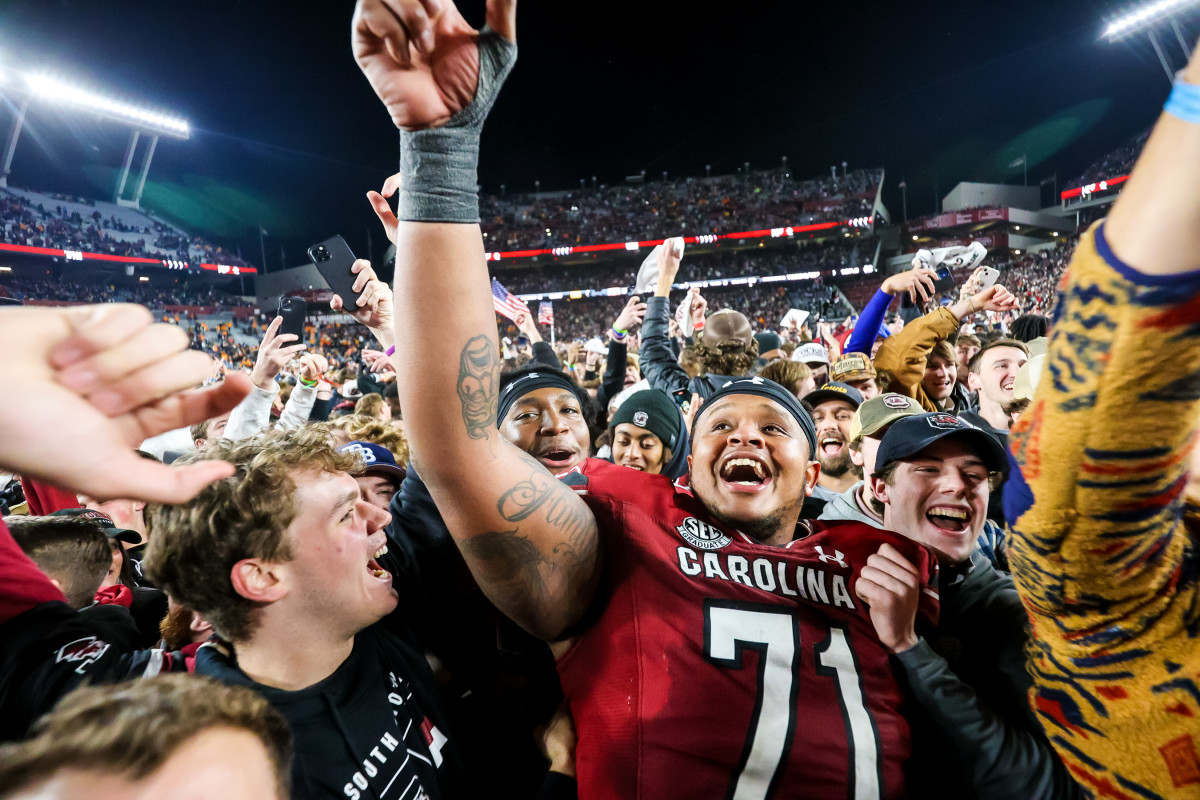On the Receiving End of Field Storming, SEC Schools Consider Disincentives

When it comes to the outlook on fans storming the football field or basketball court, the Southeastern Conference membership can be divided into three groups: those who do the storming after an upset win, those who aspire to do the storming but haven’t pulled off a sufficiently huge upset and those who are stormed upon.
If your school is in either of the first two camps, you’re probably not in love with the rule revisions that could include taking away a home game from any school that violates the SEC sportsmanship policy by storming the field or court. If your school is in the third camp, the idea doesn’t sound quite so radical.
Enter Greg Byrne, Alabama athletic director. The Crimson Tide has been on the wrong end of field stormings the past seven times they’ve lost on the road, dating back to the Kick Six game at Auburn in 2013. Last year, after losses at Tennessee and LSU, an Alabama player and staffer were involved in confrontations with fans who came on the field: Tide receiver Jermaine Burton struck a Tennessee fan in Knoxville, and staffer Evan Van Nostrand needed security to get off the field in Baton Rouge after being accosted by an LSU fan.

Byrne said “I don’t know how much support (losing a home game) has.” Commissioner Greg Sankey confirmed that later Wednesday, saying, “The more aggressive measures are not the focus.”
But other ideas are being bandied about this week at SEC spring meetings.
“Is there a way to do some fines in a little more creative way? Some of those things are being discussed right now that may get everybody’s attention,” Byrne said Wednesday. “I think there’s better education we can do.”
Added Sankey: “The momentum is not to stay still. … Some adjustment that could send a clear signal that we want to reduce, if not eliminate, field rushing and court storming.”
Kentucky is the basketball equivalent of Alabama in the SEC—the perennial power that tends to bring fans out of the stands after a loss on the road. Athletic director Mitch Barnhart is on the committee that was appointed by SEC commissioner Greg Sankey last fall to address postgame safety, along with Byrne and Georgia AD Josh Brooks (whose school is next up to be stormed in football, should the two-time national champions ever lose again). By its very makeup, that’s a committee predisposed to ratchet up the disincentives for fans invading the playing surface.
“Obviously, Kentucky in men’s basketball, it’s been a challenge for them,” Byrne said. “Georgia, it’s been a challenge for them. But until it happens to you on a regular basis, I don’t think it becomes as big an issue for you. … Obviously it’s something that’s really important for us as a university. We’ve dealt with it a lot over the years.”
Byrne doesn’t want to be the No Fun Police when it comes to discouraging one of the oldest celebration traditions in college sports. But he’s also aware of how bad the worst-case scenarios can be.
“Listen, I don’t want to take anything away from the great environment of college sports,” he said. “However, it has to be addressed at some level. Fines don’t work. Nobody is sitting in the stands saying, ‘I’m not going to go on the field today because the university is going to get fined $250,000.’ The fans don’t care; I get it. There have to be steps taken. I think this is my eighth season at Alabama. I’ve been on the field for a few stormings. It’s not fun. It’s dangerous.
“We’ve had some very scary situations that could have escalated even further. Earlier in my career at Oregon State, working for Mitch Barnhart, we had a young woman hurt badly in a field storming. Until that happens somewhere, I’m not sure everybody quite grasps the consequences of some of the situations.”
Tennessee coach Josh Heupel and South Carolina coach Shane Beamer were architects of field-storming upsets in 2022: when the Volunteers beat Bama in October, and then when the Gamecocks beat the Vols and Clemson in November. (In the latter instance, South Carolina was the visiting team but still wound up with fans on the field in Death Valley.) Both coaches know what indelible moments those were for their fan bases, but they still understand the downside that can come with them.
“I understand the concerns around it from a safety standpoint,” Beamer said. “I saw videos of instances last year when fans did storm the field, and it wasn’t always good. I was fortunate that the field stormings we were part of—one, we were the home team, the other one, we had just won the game—it was a positive in a lot of ways. I’ve been at other schools where you’re the losing team, and it can be a little intense, no question about it.”

“The dialogue around how do we keep fans and players and staff safe is a real one. I think there’s a two-edged sword on that side of it—you try to stop everyone from storming the field, and there’s a safety issue there, too. The pageantry, the passion that is college football makes it a unique endeavor and the greatest sport, in my opinion. Navigating that space the right way is really important,” Heupel said.
An option the SEC might explore is directing the winning home team to either gather in front of its student section or to even enter the stands to celebrate. Instead of bringing the fans to the team, bring the team to the fans.
“One of the things we do at Alabama in men’s basketball, after we have a pretty good win we make sure the team goes toward the student section, and they go celebrate together in that area,” Byrne said. “That’s something that has worked pretty well for us. Obviously, if I don’t want to have the field stormed, we better not have the basketball court stormed at the same time.”
